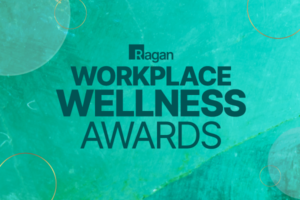How to get started with measuring burnout
Sara Whitman, chief people officer at Hot Paper Lantern, shares tips for setting definitions before goals and empowering managers to collect data.

Organizations experiencing burnout understand that quantifying its considerable human toll on employees remains a huge opportunity. Studies have shown that burnout recovery can take as long as three years, damaging that person’s productivity, positivity and general emotional wellbeing. With workplace burnout estimated to cost the U.S. economy more than $500 billion each year, Sara Whitman, chief people officer at Hot Paper Lantern, emphasizes that this has become a norm — in and outside of work.
“We are all unwell,” she says. “There are more of us suffering than there are flourishing, and it’s the exact opposite of what we want in our lives and in our work.”
The good news is, she’s confident that a stronger partnership between comms and HR can help define and quantify, burnout at most organizations. “You probably need some partnership,” Whitman says. “Triangulation, too — maybe an outside party that really specializes in this and is able to add supplementary information or use some other kind of research methods for measuring burnout.”
In the absence of such an outside partner, where do you begin? Whitman shared some advice on how to get started.
Start with definitions, then goals, to nurture the HR and comms partnership
As with any measurement initiative, you must understand what you’re measuring before setting your goals and metrics.
This is why it’s important to start with defining what burnout means at your organization — and how it manifests. Data can help you understand this, but only if HR and comms are aligned on definitions and goals before sharing insights.
“If the goal is to identify where burnout is happening, you can choose an intervention and minimize it,” says Whitman. “But is your goal to minimize or is it to prevent? That’s the big question you have to ask.”
“There’s data that helps us understand how much of an issue it is and when it’s a bigger issue,” Whitman explains. “If the goal is minimizing burnout, you can look and see where it is and try to help. The challenge is that there isn’t enough focus within HR leadership on compiling analytics that are related, and a lot of organizations — though not all of them — are looking at them more piecemeal. Then that data is not shared in partnership with communications.”
Though this disconnect around qualitative measurement practices still exists, Whitman gives her HR colleagues credit for getting better at examining other factors. She recommends her HR colleagues start by seeing what metrics they already have available.
“What are the metrics you already have that can help you understand the scope of the issue within our organization at a given time?” she asks. “Obviously, engagement survey data will give you that, but it’s only one little bit.” Other factors to consider here include: Are employees happy with their workload? Are they taking vacation time?
“If somebody’s not taking vacation time, that’s something to look at!”
Prep managers to collect the right data
Managers remain your frontline way to identify and measure burnout — assuming they aren’t burnt out themselves. But folding them in can help them, and you, operationalize the work.
“They need to undestand the signs, they need to know how to talk about it, they need to undestand what the workloads look like across their teams and that they have real, controllable power around the issue,” says Whitman. “And that if they have data from this, they can help you figure out the narrative of what it means to be supported at work.”
Whitman suggests managers have a weekly check-in with their direct reports that asks some standard questions including:
- What are your priorities for the week?
- What do you need from me?
- How are you feeling? This can be a rating scale with customized range from “totally engaged” to “very bored” or whatever fits your burnout definitions.
Additionally, an external framework like the Maslach Burnout Inventory or a partner research solution can be folded into self-assessments or manager communications (with some of the language reworked to reflect your stakeholders).
Once your managers are equipped and empowered to collect this data consistently, HR and comms can partner to make sense of it and present the findings to everyone.
“You can look at the aggregate, you can look at the individual, and then on an HR level get the whole organization to see your five-point scale,” explains Whitman. “If you see, trend-wise, that an organization is falling below three pretty consistently, it has to do with you organizationally.”
By that point, you’ll have a clearer view of what is driving the burnout and how to fix it. Do you need to reduce workloads? Do you need to institute formal breaks? Once you understand the factors, you can be confident that you’re advise on what your people need from an informed, measured place.







